|
Conversations with Friends Discussing the world(s) of Indian Art with Bina Sarkar ElliasAnkan Kazi November 01, 2024 Bina Sarkar Ellias’ The Big Book of Indian Art serves as a near-comprehensive introduction to the various worlds of Indian art. Although it traces the origins of this artistic consciousness to past traditions and schools, most of the book is dedicated to the expanding worlds of Indian modern art. The impressive timeline is conveyed by a modest note, saying that ‘I travelled from the chronicles of the contemporary gallery scene back to the primal compulsive creations of the early civilizations’. The book also acts as a corrective by including a large number of women artists, especially modernists like Shobha Broota, Gogi Saroj Pal and Madhvi Parekh. She spoke to the editor of the DAG Journal about this ambitious undertaking, along with her editorial work for the international arts magazine, Gallerie. |
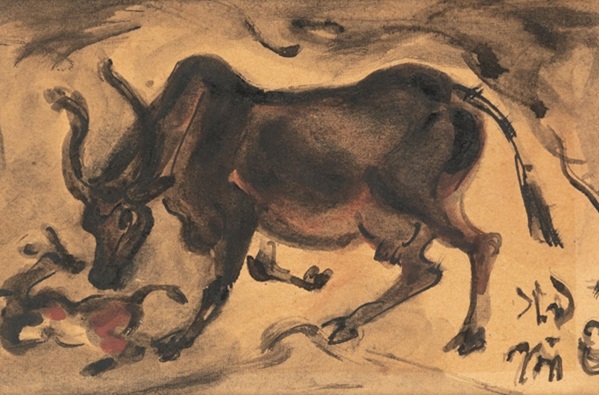
Nandalal Bose
Untitled
1952, Ink and watercolour on tinted paper, 3.5 x 5.2 in.
Collection: DAG
|
The larger civilisational touchstones of Indian history proved to be foundational moments for the rejuvenation of Indian modern art itself, as artists across the country began to draw inspiration from historical sites, premodern literary texts and classical sculptures, suggesting that this wide scope was crucial for understanding the larger project of Indian art and culture. Ellias also quotes from the iconic art historian Ananda Coomaraswamy to locate a wide set of practices that can gravitate around loose conceptions of ‘simply the right way of making things’. As a result, her book covers significant schools and movements, such as the Bengal School and, later, the Progressive Artists Group from Bombay (now Mumbai), and a wide array of individual artists, from iconic ones like M. F. Husain and G. R. Santosh, to lesser-known figures like Beohar Rammanohar Sinha, who worked on the illustrations for the Indian constitution. |
|
|

Abanindranath Tagore
Ink on paper, 10.0 x 7.0 in.
Collection: DAG
On how the book came to beBina: I was commissioned to write The Big Book of Indian Art by the Aleph Book Company, which raised some eyebrows since I’m not an academic, art historian, or art critic. However, my passion for the arts has been a constant throughout my life, sparked by visits to artists’ studios in my student years and nurtured through founding ‘International Gallerie’ in 1997, a global art and ideas publication.
|
|
|
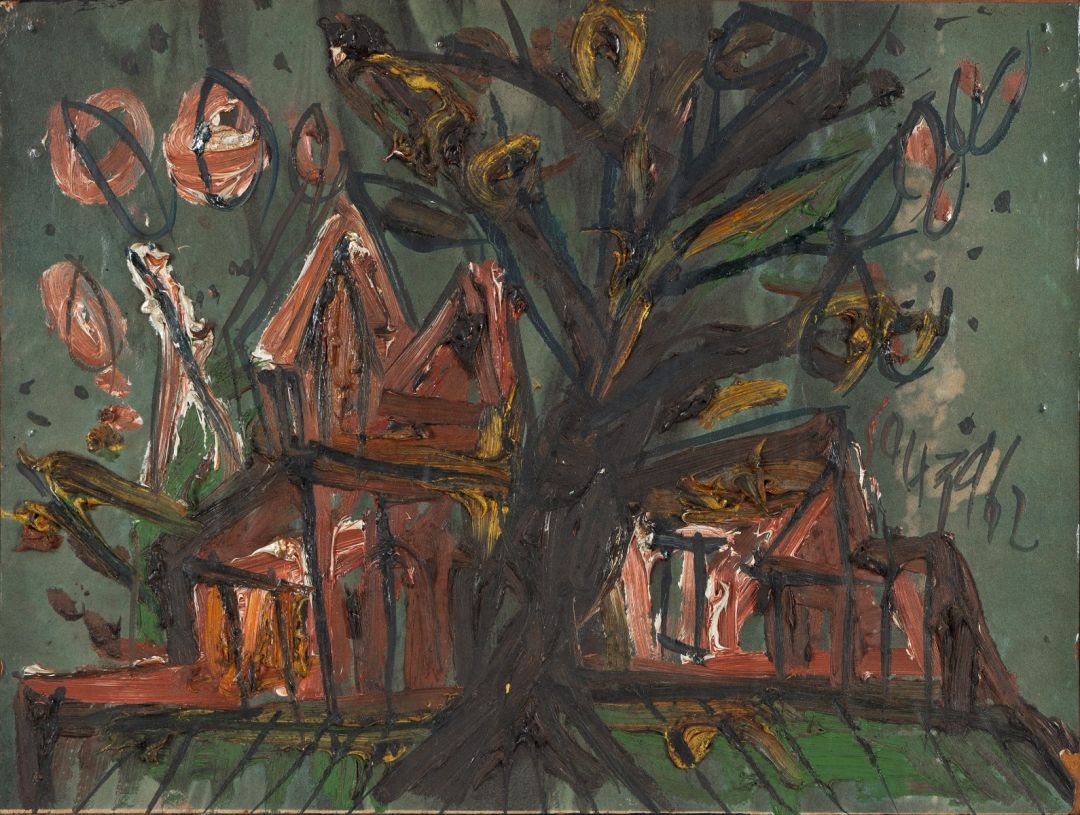
F. N. Souza
Red House and Tree
1962, Oil on magazine paper pasted on board, 10.2 X 13.7 in.
Collection: DAG
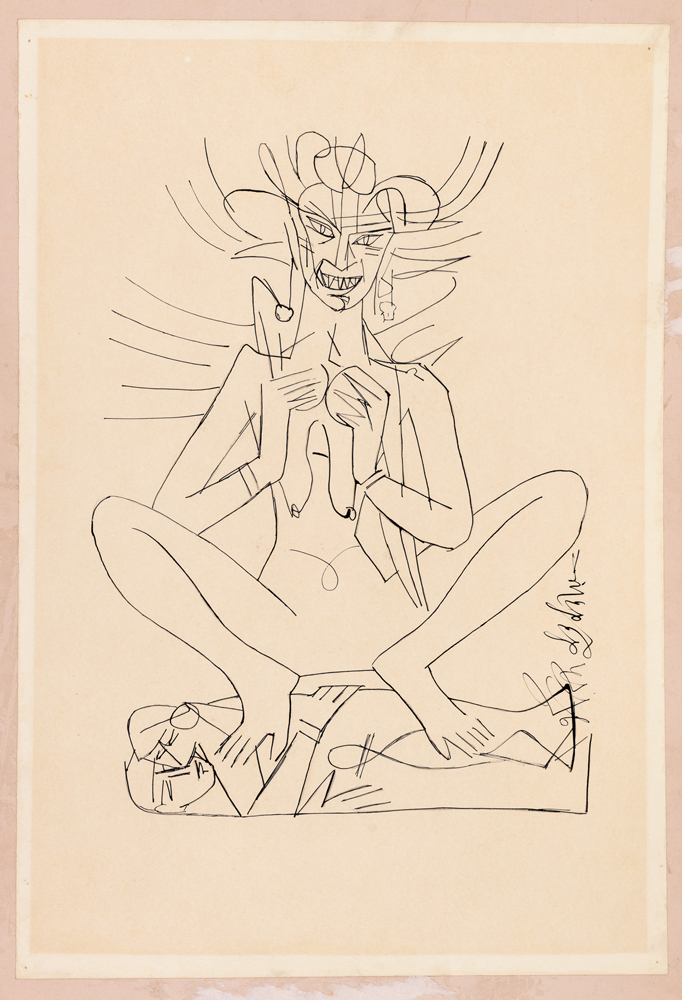
Nirode Mazumdar
Chamunda (Book- Drawings on Ramproshad Songs Series)
1967, Waterproof ink and graphite on mount board, 22.0 X 14.7 in.
Collection: DAG
On the mindset of modern artists in the post-independent eraBina: The ‘old-school’ mindset was quite different from today’s perspectives. Artists, regardless of their style, embraced a wide range of ideas, united by their shared passion for art. In the post-independence era, many began to draw inspiration from Western art, creating a vibrant landscape of individuality through the work of artists like Ram Kumar, V. S. Gaitonde, M. F. Husain, Nirode Mazumdar, Chintamoni Kar, Paritosh Sen, J. Sabavala, K. H. Ara, Krishen Khanna, S. H. Raza, F. N. Souza, and Akbar Padamsee. These artists, rooted in the ‘old school’ yet possessing fresh visions, formed a supportive community. Their collective vision fostered unique individual expressions that have infinite luminosity. |
|
|

M. F. Husain
Arrival
Oil and acrylic on jute, 35.5 x 25.5 in.
Collection: DAG
On the significance of Indian artists' global reputationBina: Global recognition for Indian artists opened up broader opportunities for engaging with Indian art, allowing the next generation to find their paths. However, today’s artists often operate in more insular environments. The competitive and commercial pressures now shape their creative processes, whether they are producing lyrical or socio-political works, often at the expense of the instinctive expressions that characterised the past. |
|
|

Shobha Broota
Celestial Music
2002, Oil on canvas, 70.0 x 70.0 in.
Collection: DAG
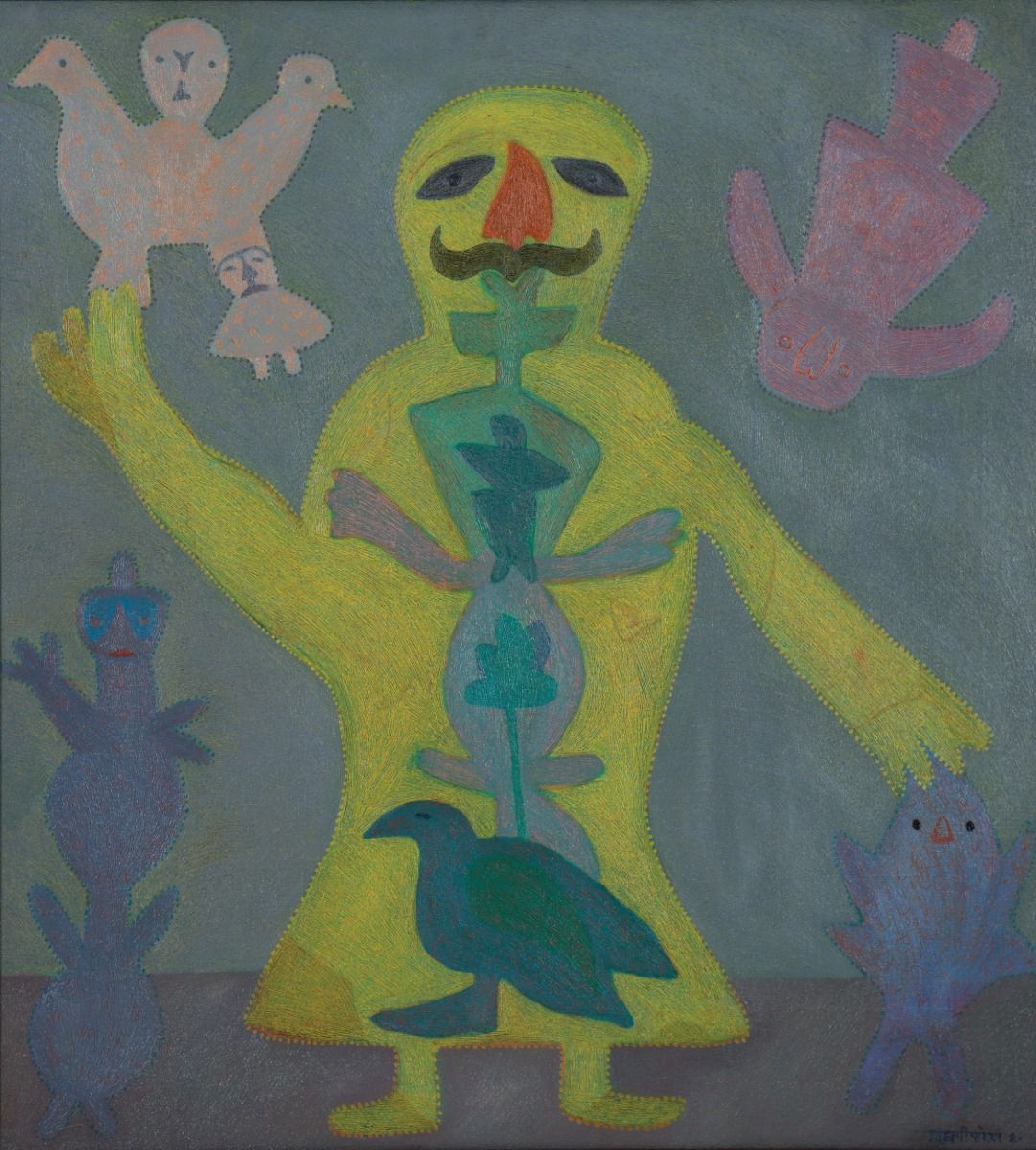
Madhvi Parekh
King of the Puppet
1980, Oil on canvas, 36.0 x 33.0 in.
Collection: DAG
On Modern women artistsBina: Some of the artists featured in the book include the vocalist Shobha Broota, who infuses rhythm into her abstract works, and engaged with diverse styles and mediums in her early work (as I’ve written in the book) including figurative works, portraitures, and printmaking, before embarking on her philosophically inclined and meditative compositions. Gogi Saroj Pal (who sadly passed away in January 2024) brought life to her folk-style narratives. Similarly, Madhvi Parekh has an intuitive connection to her surroundings, drawing inspiration from both past and present. Her canvases come alive with curious characters that seem to step in as if they were actors in a performance. |
|
|
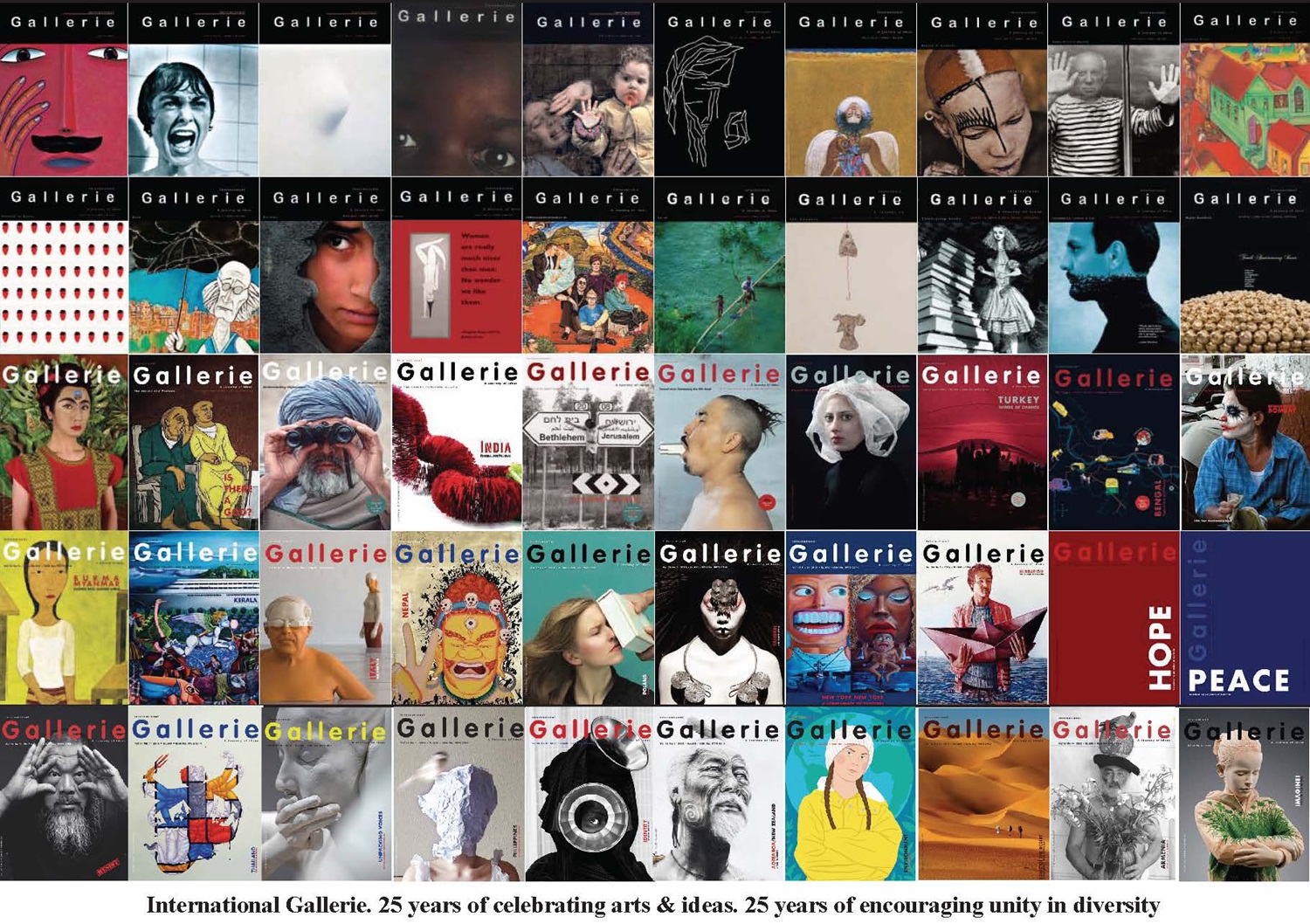
Selected covers for Gallerie
Courtesy: Bina Sarkar Ellias
On Gallerie and the relationship between art criticism and the marketBina: Magazines and art discussions provide unique insights into various art movements and artists. True artists, while influenced by different schools of thought, ultimately forge their own expressions that arise from within, rather than merely emulating others. In India, traditional mythological and folk influences can blend with European styles, resulting in works that possess their own distinct identity. Regarding your question about Gallerie, the global arts and ideas magazine I founded in 1997, the inspiration began during my student years when I served as editor of our school magazine. I had then envisioned creating a vibrant journal rich in visual and editorial content, in the future. While my passion for arts and literature remained strong, my college years in Kolkata during the politically charged late 60s and early 70s, deepened my concern for equality, human rights, and justice. Time flew, and it wasn't until 1996 that the seed of that seminal idea blossomed into Gallerie, which was started in the following year. What began as a platform to showcase excellence in the arts, evolved into thematic issues addressing critical topics such as 'War,' 'Race/Casteism,' 'Peace,' and discussions on 'Migration,' 'Beauty,' and even 'Rain.' |
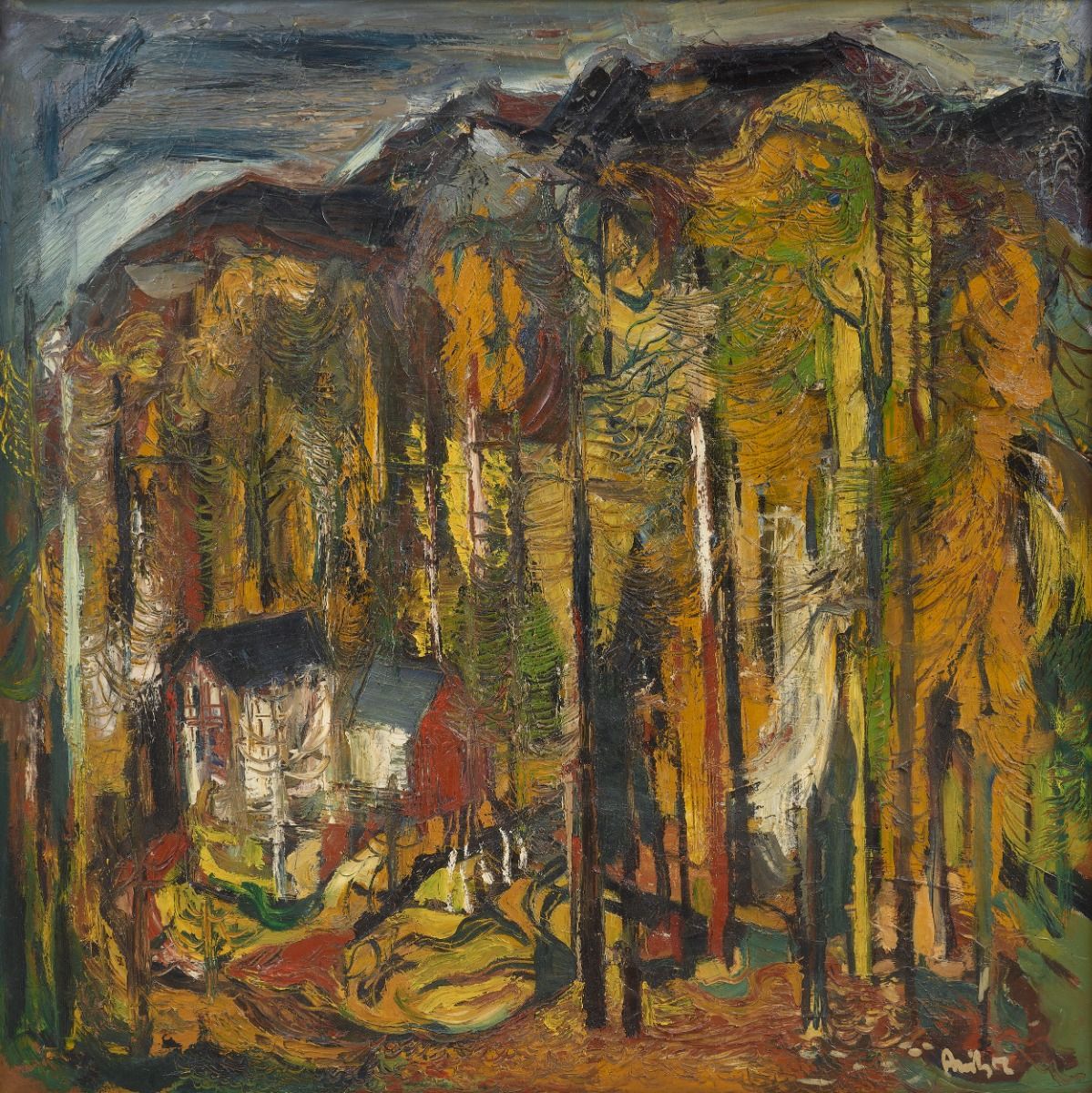
Avinash Chandra
Untitled (Houses in the Forest)
1956, Oil on canvas, 40.0 x 40.0 in.
Collection: DAG
The central focus of Gallerie has always been on exploring various regions to share their art and culture, fostering understanding and appreciation of diverse cultures. I believe in co-existence and unity in diversity, a vision I aim to nurture through the magazine. Over the past twenty-six years, I have travelled extensively to research regions such as Afghanistan, Pakistan, Poland, France, Italy, Palestine, Armenia, Central Asia, Myanmar, Taiwan, Japan, and many others. In India, I have delved into the rich cultures of Kashmir, Kerala, Bengal, and the vibrant city of Mumbai. So far, I have published fifty volumes chronicling these explorations, and I’m currently working on the fifty-first. Regarding the current trend of market-oriented networks you mentioned, I have noticed that the art scene has become more insular for new generations. The spontaneous camaraderie that once thrived is fading, replaced by a calculated approach to creating art aimed at these market networks. As a result, there seems to be a diminishing sense of soul in much of the work. However, fortunately one can still encounter a few rare practitioners who manage to convey their true emotions and authenticity amidst this trend. |
|
'Conversations with Friends’ is a series where we speak with inspirational figures from the art world who are working behind the scenes |
|
|


